Canon Eos 5d Mark Iv Digital Slr Camera How to Upload Dslr Pictures
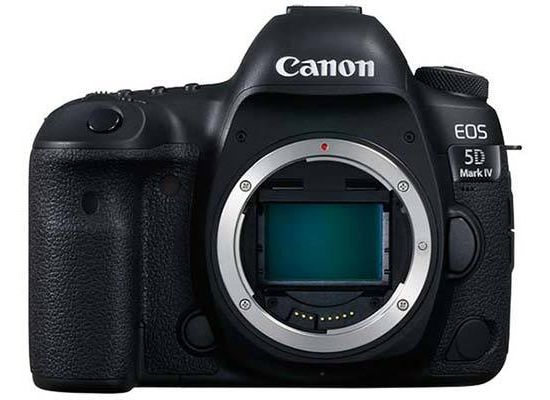
Introduction
The Canon EOS 5D Mark IV is a new professional digital SLR camera. The 5D Mark 4 features a xxx.4 megapixel CMOS sensor, 7fps continuous shooting with full AF/AE tracking, internal 4K motion picture recording (4096 x 2160pixels) at 30/25/24 fps and 8.viii megapixel in-camera 4K still frame grab, an expandable ISO range of 50-102400, 61 focusing points with 41 cross-type AF points plus the ability to to utilize extenders with all telephoto lenses for f/8 AF with all 61 points ( including 21 cross blazon), focusing in light as depression equally -3 EV or -four EV in Alive View mode, 150,000-pixel RGB+IR metering sensor, 3.2-inch touchscreen with 1,620k dots, a new AF 'Area Pick' push button, and built-in Wi-Fi, NFC, secure file transfer (FTPS/FTP) and GPS. The 5D Mark 4 is likewise the start EOS photographic camera to offer the Dual Pixel RAW file format, which allows you to fine-melody images in post-product by adjusting or correcting the betoken of sharpness, shifting the foreground bokeh or reducing image ghosting. The Canon EOS 5D Marker 4 retails for £3629 / €4899 / $3499 body-only.
Ease of Employ
The 5D Mark Four is in one case over again very similar to its predecessor in terms of appearance, being very slightly smaller (150.vii 10 116.4 x 75.9mm) and weighing 50g less (890g in total) than the previous Marker Three version. The 5D Mark IV has a magnesium alloy body, which should make it more durable in the longer term than plastic-bodied cameras, and it too includes a welcome level of weather condition-proofing for protection against dust and moisture. There's a textured surface area on both the deep hand-grip and around the thumb-rest on the rear of the camera, and size-wise the 5D Marking IV is perfect for anybody with normal to large-sized hands. On the front end of the 5D Mark IV is an infrared port on the grip, depth-of-field preview button, self-timer lamp, relocated port for a remote shutter release, and a monaural microphone underneath the camera logo.
Similar other semi-pro cameras, the Canon EOS 5D Mark IV offers two control wheels; a modest ane on the top of the handgrip, and a large, spinning dial on the back of the camera. This rear 'quick control punch' is characteristic of all loftier-end Catechism EOS cameras, used to utilize rapid exposure adjustments. Information technology'due south a scrap of an acquired sense of taste compared to more than conventional control dials, but you quickly get used to it and it is easy to 'spin'. There'southward a dedicated Lock switch which toggles the furnishings of this punch on and off.
The quick control dial does have upward the infinite where you'd normally expect to notice a four-way controller, which means that for carte navigation Canon has incorporated a small joystick on the dorsum of the camera. This joystick works well enough, merely it'south not equally positive or as easy to utilise as a conventional 4-manner controller. In that location'due south a make new AF area selection button on the dorsum of the EOS 5D Mark Four which makes it easier to switch the autofocus point when holding the camera to your middle. Underneath this is the Quick button which opens the Quick Control screen, which is especially well-suited to beginners and tripod work. Depending on which shooting manner you lot're using, this lets yous set various parameters via the LCD screen, using the joystick to move around the diverse options.
The 5D Mark IV is the latest EOS camera to feature a touch-screen. Information technology supports a variety of multi-touch on gestures, such as pinching and swiping, for choosing shooting modes, changing settings, tracking faces, selecting auto-focus points, and focusing and taking a flick in Live View mode. In playback you can swipe to move from image to image and pinch to zoom in and out, just similar on an iPad or other tablet device. The power to focus and accept the shot with a single press of your finger on the screen makes information technology quick and easy to capture the moment.
On the meridian-correct of the Canon EOS 5D Mark IV, positioned in a higher place the big monochrome condition LCD display, are iii buttons, each of which has ii functions. You press a button and then turn either the top punch or the rear punch to change the corresponding setting. It does take a piddling while to memorise which button does what, and which punch you need to plough. The 5D Mark Four besides shows the settings on the main LCD screen as well as the status LCD. There'south a smaller 4th push which activates the status LCD brandish low-cal so that yous tin can use it in the dark.
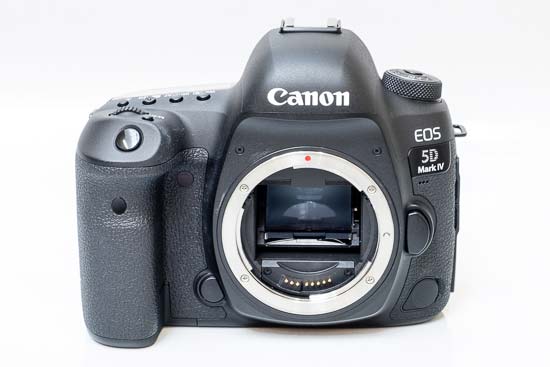 |
| Front of the Canon EOS 5D Mark Four |
There are two LCD displays on this camera; the 3.2-inch colour LCD on the rear and the smaller condition console on the meridian. On cheaper DSLR cameras, the LCD on the rear commonly has to do both jobs, only on this model all of the camera's master settings are visible from above on the smaller panel. This makes the Canon EOS 5D Marking IV quicker to utilise and likewise helps to extend the bombardment life. The main LCD screen offers a fantastic VGA resolution with 1,620K dots, so yous may find yourself using information technology more often than you thought. Importantly information technology also allows you to estimate the critical sharpness of your photos using the LCD screen. The viewfinder offers 100% coverage with a magnification of 0.71x and dioptre correction.
Like most DSLRs aimed at prosumers, the EOS 5D Marking Iv offers all the usual serious manual and semi-automatic shooting modes for users who desire more advanced exposure command, via a chunky and positive dial on the top-left of the camera torso, consummate with a primal lock button to prevent the dial from inadvertently moving. Canon refers to these advanced operations as the 'creative zone' and provides all the normal settings including Program, Aperture and Shutter Priority and the total Transmission mode. In that location is likewise an automobile shooting mode aimed at beginners called Scene Intelligent Motorcar, which allows you to change merely a few key settings using the LCD screen, with the camera automatically setting both the aperture and shutter speed for you.
The 5D Mark Four's power switch is located underneath the shooting fashion punch. Over on the other side of the camera is a Multi-Office push, positioned adjacent to the shutter release button. The M-Fn , or Multi-function, push button toggles through the 5 unlike AF area choices after pressing the AF Point select button. The AF areas are Transmission AF, Spot AF, AF betoken expansion, Automatic AF bespeak selection and Zone AF, and they can besides be selected via the Quick Control Screen menu.
In one case the EOS 5D Marker Four is in 1 of the 'creative zones', users tin adapt the ISO setting into i of 12 positions from 50 to 102,400 (yous demand to to enable the ISO 50, 52000 and 102,400 modes via the "ISO expansion" custom function option). This massive ISO range allows yous to shoot in almost whatsoever lighting conditions without having to resort to using wink, which is practiced news as the 5D Marking IV doesn't really have a congenital-in pop-upwardly flash (you lot'll need to budget for an external flashgun). The EOS 5D Mark IV offers a range of 3 Auto focus modes (One Shot, AI Focus and AI Servo), and there are six preset, auto, kelvin and custom white residual options.
The viewfinder displays all cardinal exposure information including the ISO speed, and there are four metering modes including a tighter ane.v% Spot metering mode, useful in tricky lighting conditions equally an culling to the excellent and consistent Evaluative metering organization. The 5D Mark Four a 61-bespeak machine-focus system, with no less than 41 of them being cross-type points, helping to ensure that moving objects remain in focus. In that location'south also a whole AF bill of fare defended to fine-tuning the 5D Mark IV'south autofocus system, with a range of customisable AF pre-sets helping you to deal with different subjects.
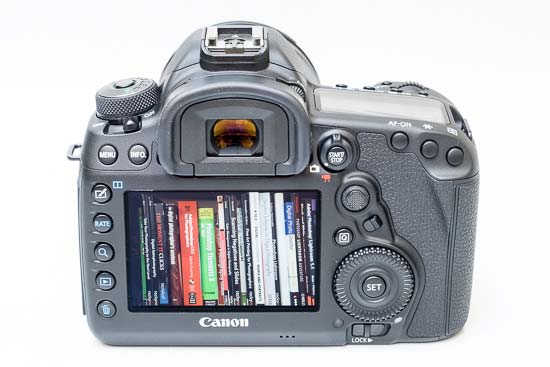 |
| Rear of the Catechism EOS 5D Marking IV |
Autofocusing is very swift in a broad range of different weather condition, including lower light. It doesn't seem to matter which lens is fastened to it, simply if you lot are using professional "Fifty" lenses then yous should find that focusing is near instant in expert light, taking a touch longer in low calorie-free weather condition. The sensitivity has been increased to -3EV, compared with the -2EV of the previous 5D model, which makes information technology more responsive in darker conditions. Further skilful news is that all 61 of the Canon EOS 5D Mark Four's AF points tin focus at f/eight, which is useful for wild animals photographers who are using long lenses and/or extenders.
The menu system is the same as on most EOS cameras, utilising a simplified tab structure that does away completely with scrolling. There are half-dozen main menu options, each containing up to 5 individual tabs of options. You can besides setup your ain customised card folio for instant admission to often used settings via the My Menu setting. Only the complex Custom Functions and AF menus detract a little from the overall usability. Thankfully the documentation that comes with the 5D Marker 4 is clear enough, every bit it is with all Catechism cameras, if a petty light on detail. You lot do get a the transmission in English throughout and y'all'll find most things that you need to know about the camera's operation in hither, without the need to search through the supplied CDs for an 'electronic' manual.
The Canon EOS 5D Mark IV features built-in wi-fi connectivity, which allows you to share images during playback via the Wi-Fi menu option. Enable the Wi-Fi menu option and the Wi-Fi Role choice appears underneath, which contains six icons. The 5D Mark Four tin can connect to another camera, a smartphone, a calculator, a printer, the internet and a DNLA device respectively. Setup is long-winded but relatively straight-forward for each scenario, although yous'll need a basic understanding of the protocols involved (or consult the supplied User Guide). Note that y'all need to install the dedicated and free EOS Remote app to connect the 5D Mark Iv to the world's most popular smartphone, or the Apple tree iPad and iPod Touch, or an Android device. You can then utilise your smartphone or tablet to remotely command almost every aspect of the camera's operation, review images on a larger, more than detailed screen and to transfer images between devices.
The 5D Mark 4 tin tag your images with GPS data (latitude, longitude, altitude and shooting time) but like many of the company'southward compact cameras. Nosotros prefer having GPS built into the camera rather than having to sync it with an additional device, although information technology does consequently endure from the issue of negatively affecting battery life. The EOS 5D Marking IV also has built-in NFC, which allows you to quickly transfer images to a compatible smart device by simply tapping them together.
We tested the EOS 5D Mark IV with the new EF 24-105mm f/4L IS Ii lens, which is offered equally a kit lens in some regions. This combination offered fast, positive autofocus, can track moving subjects very well and is besides near-silent, and we'd recommend that you choose this kit if you lot're buying into the Canon organisation for the first fourth dimension. The 24-105mm lens also crucially features prototype stabilisation. This is important for Catechism, equally some competitors cameras characteristic image stabilisation that's built-in to the camera trunk, which therefore works with their entire range of lenses. Canon's system is obviously limited past which lenses you lot choose, but it does offer the slight advantage of showing the stabilising event through the viewfinder.
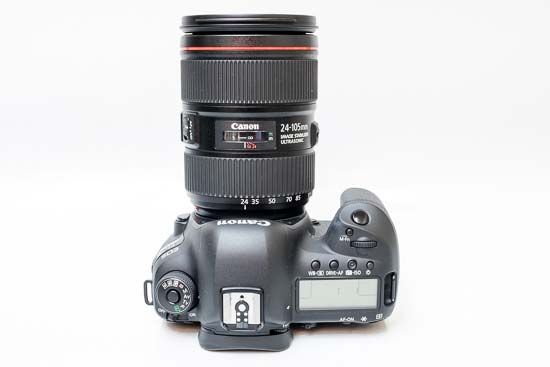 |
| Top of the Catechism EOS 5D Marking Iv |
The EOS 5D Mark IV features the latest DIGIC 6 image processor, which produces noticeably faster image processing, start-up and image review times than the previous 5D Mark Iii camera and better noise reduction in high-ISO images. DIGIC 6 also allows the 5D Mark IV to shoot slightly faster than the previous model, obtaining a speed of 7fps for for up to unlimited number of JPEGs or 21 RAW images. xiv-bit A/D conversion, in-camera HDR processing, multiple exposure function and in-camera RAW processing are likewise enabled by the Digic half-dozen processor. Battery life is rated to CIPA standards at 900 shots using the viewfinder, or 200 shots in live view way. This tin be doubled by using the optional BG-E20 bombardment grip which takes two LP-E6/LP-E6N batteries.
The 5D Mark IV has an identical Alive View organisation to its predecessor. If you're new to DSLRs and don't understand the terminology, basically Live View allows you to view the scene in forepart of you live on the LCD screen, rather than through the traditional optical viewfinder. This is an obvious attraction for compact camera users, who are familiar with holding the photographic camera at arm's length and composing via the LCD screen. It's too appealing to macro shooters, for case, as it'due south oftentimes easier to view the screen than look through the viewfinder when the camera is mounted on a tripod at an awkward angle.
Live View is like shooting fish in a barrel to turn on via a dedicated switch on the dorsum of the camera which toggles between Alive View and Movie recording and a self-explanatory Start/Finish button. A grid line display, dual-axis electronic level and very useful live histogram tin be enabled to help with composition and exposure, and you can zoom in past upwardly to 10x magnification of the epitome displayed on the LCD screen. Focusing is accomplished via the AF-On push button, or you can half-press the shutter-push button. Live View can also be controlled remotely using the supplied EOS utility software, which allows yous to adjust settings and capture the paradigm from a PC.
There are three types of focusing system on offer during Alive View shooting. The first, Quick AF, works by physically flipping the camera mirror to engage the auto-focus sensor, which then momentarily blanks the LCD screen and causes a physical sound, before the prototype is displayed after about 1 second. The other methods, Live AF and Live AF with Confront Detection, use an epitome contrast car-focus organisation, much similar that used by point-and shoot compacts, the main benefits being the complete lack of racket during operation, and no LCD blackout. Unfortunately these are much slower than the Quick AF mode, taking over 3 seconds to focus on a clearly-defined subject in bright light, which will put off most users that are attracted by the promised point-and-shoot feel. On a more positive note, you can move the AF point around the screen, and the 5D Mark Four successfully detected faces in near situations.
To move into the Canon EOS 5D Mark IV'southward video recording manner, you need to push button the switch most the viewfinder across to video recording and then press the Start/Stop push button. To alter the recording quality, you lot can press the Q push and switch between the 4K options and the full Hd options. It's worth noting that if you lot're shooting in 4K you will be limited to a maximum ISO of 12800. You tin can shoot for a full 29 minutes and 59 seconds when using the EOS 5D Mark IV. This is down to a heat pipe which draws oestrus away from the camera's sensor and facilitates such long recording times. You as well of course take total transmission control. That's not to say that the video options here are perfect - it'south not possible to record 4K when outputting via the HDMI cable, and then professional videographers may all the same be put off.
If you tape something in 4K, it's possible to extract stills from the resulting video in camera. Playback the video and you'll see an option called "Frame Grab". This will allow you to save a eight.8 one thousand thousand pixel JPEG image from the video you have recorded. This has some useful applications for loftier frame rate recording of fast moving or unpredictable subjects - if y'all but demand a relatively minor (only notwithstanding printable at A3) image, then it may be preferable to shoot in 4K and extract an image than to use traditional stills shooting.
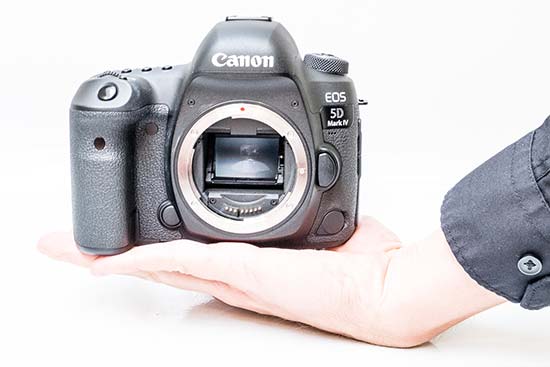 |
| The Canon EOS 5D Mark Iv In-manus |
Dual Pixel RAW is a new feature that takes reward of the 5D Mark Iv'south then far unique dual photodiode construction. Essentially during Dual Pixel RAW shooting, a single RAW file saves ii images into the file, one containing the normal prototype and the other whatever parallax information, which can be measured and the subject altitude data extrapolated. Using the Dual Pixel RAW Optimizer in Canon's Digital Photo Professional software (v4.5 or later), you can then adjust or correct the point of sharpness, shift the foreground bokeh or reduce image ghosting. In exercise nosotros found that the possible adjustments were quite small, and Canon themselves state that you should "shoot at a lens focal length of at to the lowest degree 50mm and an aperture of f/5.six or lower, ensuring the ISO value is 1600 or lower" to achieve the best results. As well, for technical reasons, only one of these adjustments can be performed on a Dual Pixel RAW file per processing session. Note that turning on Dual Pixel RAW increases the file size of each RAW file you shoot from about 35-37Mb to roughly 65Mb, and the number of continuous shots y'all can accept drops from 21 RAW images to about 7.
More useful, especially if you take a number of older lenses, is the AF Microadjustment feature that has trickled down from the pro DSLRs. This allows y'all to change the focus of each lens, and then use a focusing target to test if the lens focuses correctly, and if information technology doesn't, alter information technology slightly using the AF Adjustment pick, then test again until perfect focus is achieved. With most other DSLR systems you'd have to send the camera and lens off for calibration (and perchance even take to pay for it), but with the 5D Marking Four, you tin calibrate all of your lenses in the comfort of your ain home (up to twenty lenses can exist stored in the camera). The EOS 5D Mark IV features a silent shooting mode that reduces the audio of both the shutter and mirror, perfect for situations where you don't desire to depict unwanted attending to yourself. A continuous silent style is also bachelor, although its at a slower rate of 3fps than the headline 7fps mode.
The EOS 5D Mark Four implements the same grit-removal technology as its predecessor, where the sensor is shaken briefly at high frequency to dislodge any dust particles from its surface. This could delay the need for manual sensor cleaning, possibly indefinitely, but it won't be able to remove 'viscous' deposits like salt spray, pollen or the smears left behind by careless sensor cleaning or the incorrect kind of solvent. The 5D Mark Iv likewise inherits the internal Grit Delete Data system from the 5D Mark 3, which can map the position of visible dust on the sensor. This can then be deleted automatically after the shoot with the supplied Digital Photo Professional software.
Peripheral Illumination Correction is a feature that's actually a lot simpler that it initially sounds. Basically information technology corrects the unwanted effects of vignetting, typically seen in wide-angle photos in the corners of the frame. The 5D Mark IV contains a database of correction data for various Canon lenses and, if Peripheral Illumination Correction is enabled, automatically applies it to JPEG images. For RAW images the correction is practical later on in the Digital Photo Professional person software. Up to 40 lenses can be programmed into the 5D Mark IV, with over eighty currently available to choose from. Peripheral Illumination Correction is a useful and effective addition, particularly for JPEG shooters, and tin can safely be left turned on all of the fourth dimension.
Once you lot have captured a photograph, the Catechism EOS 5D Marking 4 has a range of options for playing, reviewing and managing your images. More information about a captured image tin can exist seen on the LCD by pressing the Info button, which brings upwardly a effulgence image histogram and all the shooting Exif data, including shutter speed and the time and date it was captured, with a second press displaying an additional RGB histogram. Highlight Alert and AF Point Display tin also be turned on via the Playback menu. It is simple to get a closer expect at an epitome as you can zoom in up to xv times, and information technology is also possible to view pictures in a set of nine contact sheet. Pressing the Creative Photograph button displays 2 images side-by-side to permit y'all to compare the quality of dissimilar exposures on the camera. Y'all tin also delete an image, rotate an prototype, view a slideshow, protect images and then that they cannot be deleted, and set various printing options. Unlike some competitors, at that place are no digital styles or effects that tin can be applied to an image afterwards it has been taken - the more subtle Picture Styles are the only fashion of tweaking your JPEGs in-camera, before they are captured. In-camera prototype rating via a new dedicated button on the rear makes it piece of cake to organise your images alee of mail-production, with the rating maintained in IPTC-friendly software.
The Canon EOS 5D Mark Iv's software suite is very good. Admittedly, photographers who've graduated to a photographic camera similar this one will about certainly have called image browsing and editing software already, and so they won't need the basic image browsing programme included here, only there's more than that. You also get Canon'due south simple but constructive PhotoStitch application for making panoramic shots, a utility for using the 5D Marker Iv remotely (while tethered to a PC) and Canon's Digital Photograph Professional person awarding for converting RAW files. This is a big bonus, because other makers don't always include such good RAW conversion software. Digital Photo Professional certainly isn't the all-time RAW converter on the market, merely importantly does mimic the photographic camera'due south Flick Styles 'retrospectively'. In addition the supplied Movie Fashion Editor software can exist used to create custom Movie Styles on your computer instead of in-camera.
Image Quality
All of the sample images in this review were taken using the 30 megapixel Fine JPEG setting, which gives an boilerplate image size of effectually 8Mb.
The Canon EOS 5D Marking IV produced images of fantastic quality. It offers racket-free JPEG images from ISO l all the way upwardly to ISO 3200, with dissonance beginning actualization at ISO 6400 - an incredible operation for a xxx megapixel, 35mm SLR. The faster settings of 6400, 12800 and 25600 display relatively petty racket, with ISO 51200 suitable for small prints and spider web images and the fastest setting of 102400 all-time reserved for emergenices. The night photograph was very good, with the maximum shutter speed of thirty seconds and Bulb style allowing you to capture enough lite in all situations. The 7 unlike Picture Styles and the ability to create your own are a real do good to JPEG shooters, as are the Highlight Tone Priority and Auto Lighting Optimizer custom settings when used in the right weather. The HDR way combines three images taken at different exposures to create a single epitome with greater dynamic range, plus it offers natural and more artistic looks.
Dissonance
There are 12 ISO settings bachelor on the Canon EOS 5D Marker Four which you can select at any fourth dimension. Here are some 100% crops which evidence the noise levels for each ISO setting, with the JPEG version on the left and the RAW on the right.
| JPEG | RAW | |
| ISO 50 (100% Crop) | ISO 50 (100% Ingather) | |
 |  | |
| ISO 100 (100% Crop) | ISO 100 (100% Crop) | |
 |  | |
| ISO 200 (100% Crop) | ISO 200 (100% Ingather) | |
 |  | |
| ISO 400 (100% Crop) | ISO 400 (100% Crop) | |
 |  | |
| ISO 800 (100% Crop) | ISO 800 (100% Crop) | |
 |  | |
| ISO 1600 (100% Crop) | ISO 1600 (100% Crop) | |
 |  | |
| ISO 3200 (100% Crop) | ISO 3200 (100% Crop) | |
 |  | |
| ISO 6400 (100% Crop) | ISO 6400 (100% Crop) | |
 |  | |
| ISO 12800 (100% Crop) | ISO 12800 (100% Crop) | |
 |  | |
| ISO 25600 (100% Crop) | ISO 25600 (100% Crop) | |
 |  | |
| ISO 51200 (100% Crop) | ISO 51200 (100% Ingather) | |
 |  | |
| ISO 102400 (100% Crop) | ISO 102400 (100% Ingather) | |
 | 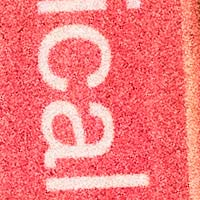 |
File Quality
The Canon EOS 5D Marker IV has 2 different JPEG file quality settings available, with Fine being the highest quality JPEG choice. Here are some 100% crops which show the quality of the various options, with the file size shown in brackets.
Night
The Canon EOS 5D Mark IV's maximum shutter speed is 30 seconds and at that place's a Bulb mode for even longer exposures, which is first-class news if y'all're seriously interested in night photography. The shot beneath was taken using a shutter speed of 30 seconds, aperture of f/11 at ISO 100.
| Dark | Night (100% Crop) |
 |  |
Highlight Tone Priority
This setting promises to improve the highlight particular of the image past expanding the dynamic range from 18% grey to bright highlights. Turning it on didn't brand a great deal of departure in our test shot, as shown below.
| Off | On |
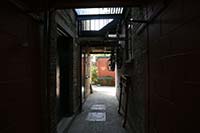 | 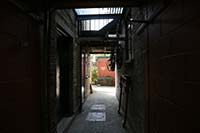 |
Machine Lighting Optimizer
This setting promises to automatically correct the brightness and contrast of an epitome, with three levels of varying intensity available. There was a slight difference between the weakest and strongest settings, equally shown below. Annotation that the user guide warns that this setting might crusade noise to increase at college ISO speeds.
| Off | Low |
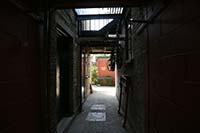 | 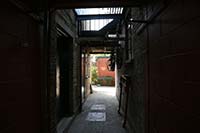 |
| Standard | High |
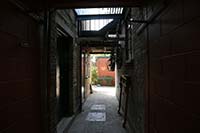 | 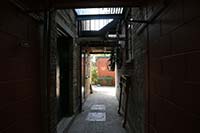 |
Multiple Exposure
This setting allows you to combine up to ix images into a single composite image, with a range of different ways to blend them together. Here'due south an case with two images combined.
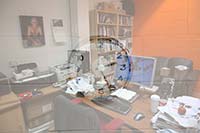
HDR
The HDR mode combines three images taken at dissimilar exposures to create a single epitome with greater dynamic range, with natural and more artistic looks also on offering.
| Off | +ane EV |
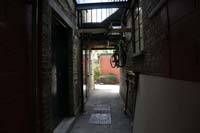 | 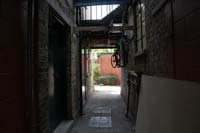 |
| +two EV | +iii EV |
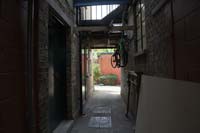 | 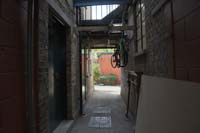 |
| +3 Natural | +3 EV Art Standard |
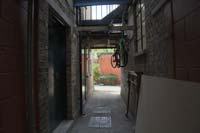 | 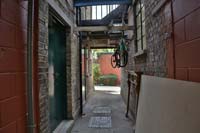 |
| +3 EV Art Brilliant | +three EV Art Bold |
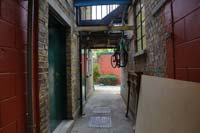 | 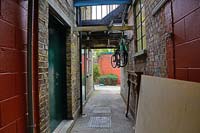 |
| +3 EV Art Embossed | |
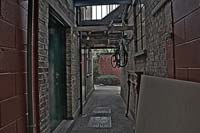 |
Picture Styles
Canon's Picture Controls, similarly to Nikon'due south Picture Styles, are preset combinations of unlike sharpness, contrast, saturation and colour tone settings. The seven available Picture show Controls are shown below in the following series, which demonstrates the differences. There are too 3 User Defined styes so that y'all can create your own wait.
| Standard | Portrait |
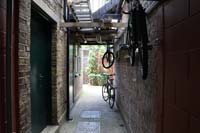 | 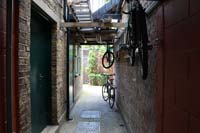 |
| Landscape | Fine Item |
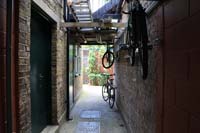 | 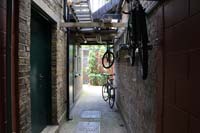 |
| Neutral | Faithful |
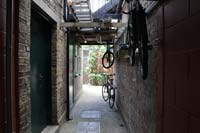 | 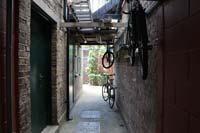 |
| Monochrome | |
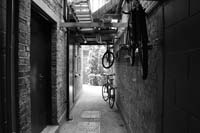 |
Sample Images
This is a selection of sample images from the Catechism EOS 5D Marking Iv camera, which were all taken using the 30 megapixel Fine JPEG setting. The thumbnails below link to the full-sized versions, which have not been altered in any way.
Sample RAW Images
The Canon EOS 5D Mark IV enables users to capture RAW and JPEG format files. We've provided some Canon RAW (CR2) samples for y'all to download (thumbnail images shown below are not 100% representative).
Sample Film & Video
This is a sample movie at the highest quality setting of 4096x2160 pixels at 25 frames per 2d. Please notation that this 15 2nd movie is 944Mb in size.
Product Images
 |
| Front of the Canon EOS 5D Marking 4 |
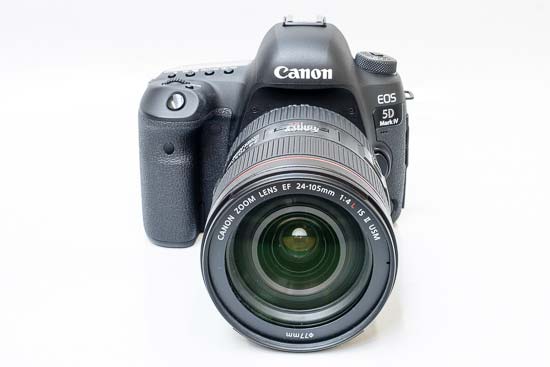 |
| Front end of the Canon EOS 5D Mark IV |
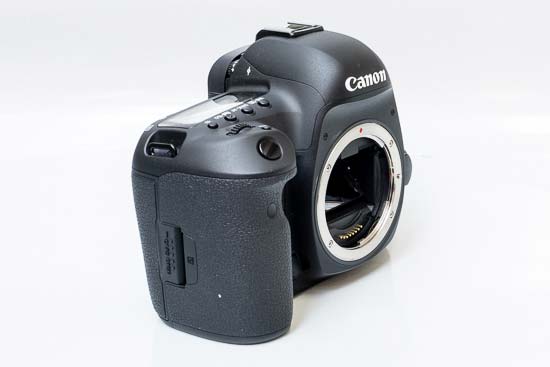 |
| Side of the Canon EOS 5D Marker Iv |
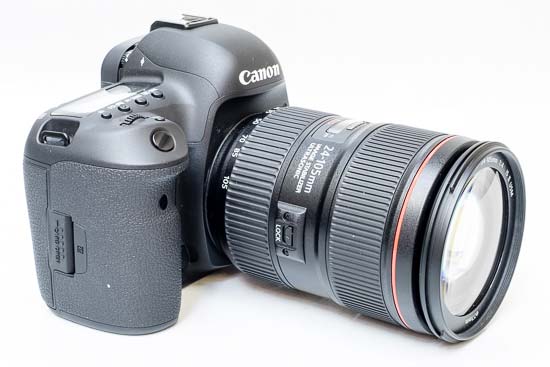 |
| Side of the Catechism EOS 5D Mark 4 |
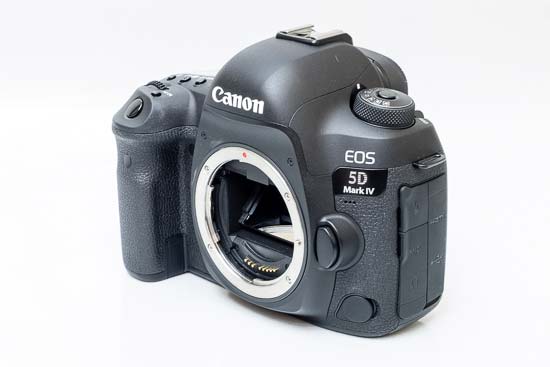 |
| Side of the Canon EOS 5D Marking Iv |
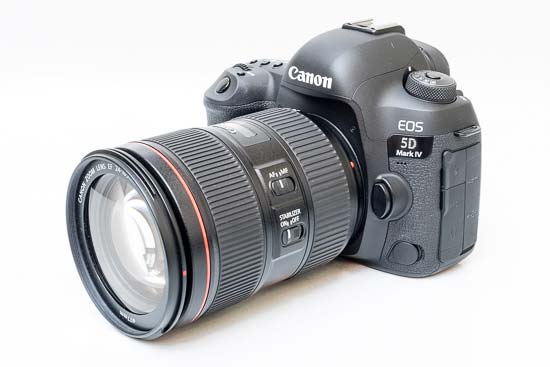 |
| Side of the Canon EOS 5D Mark Iv |
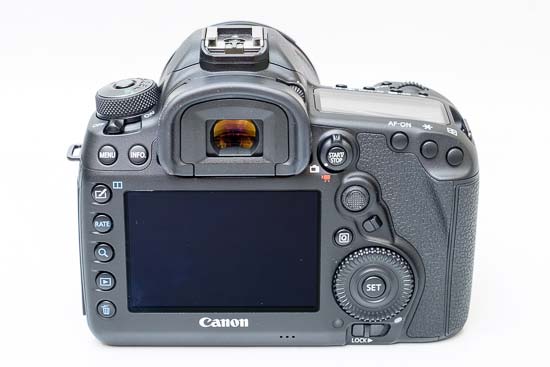 |
| Rear of the Catechism EOS 5D Marker IV / Turned Off |
 |
| Rear of the Canon EOS 5D Mark Iv / Image Displayed |
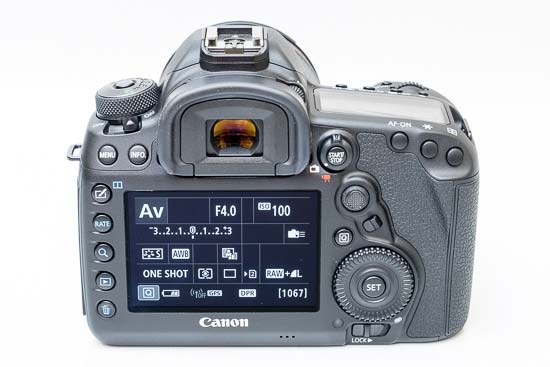 |
| Rear of the Canon EOS 5D Marking Iv / Info Screen |
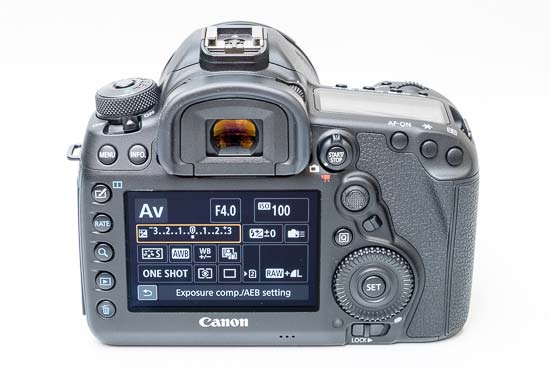 |
| Rear of the Catechism EOS 5D Marking Four / QUick Menu |
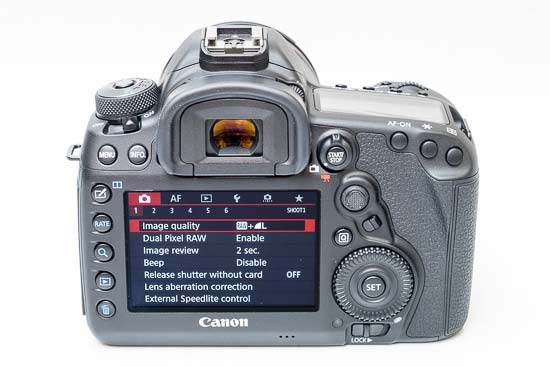 |
| Rear of the Canon EOS 5D Mark IV / Main Card |
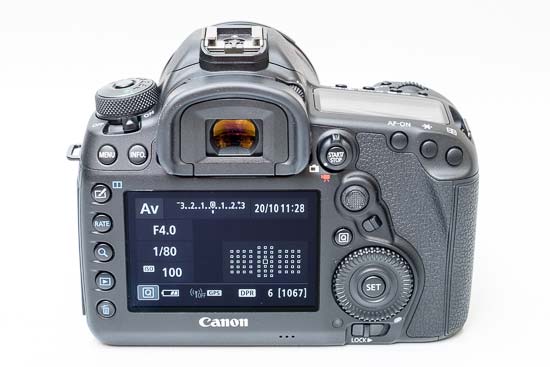 |
| Rear of the Canon EOS 5D Mark IV / Info Screen |
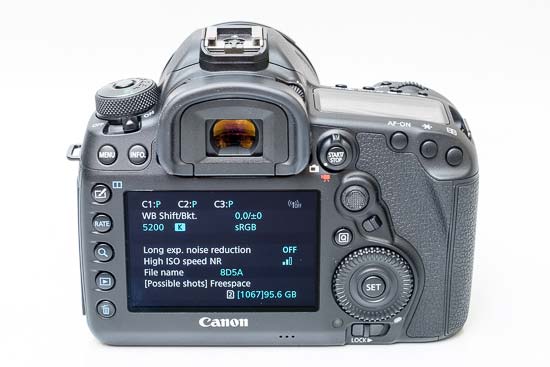 |
| Rear of the Catechism EOS 5D Mark Four / Info Screen |
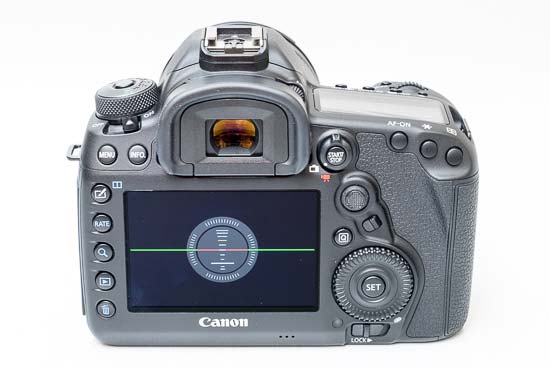 |
| Rear of the Canon EOS 5D Mark Four / Info Screen |
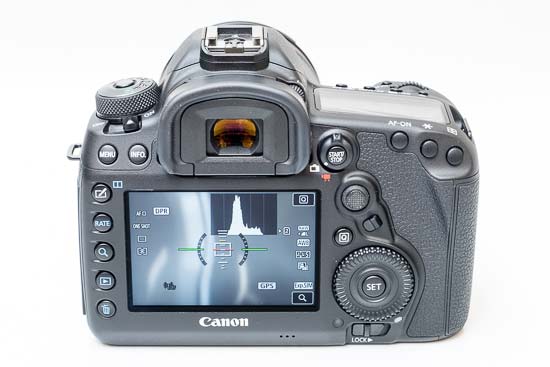 |
| Rear of the Canon EOS 5D Mark IV / Live View Stills |
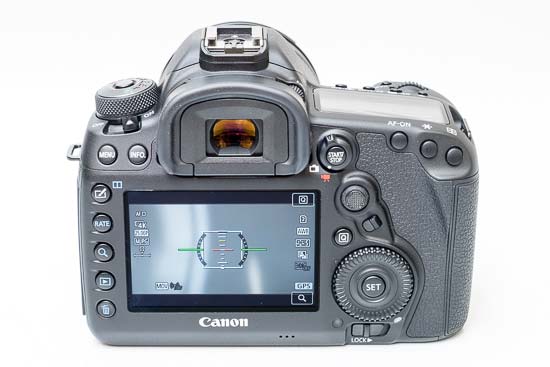 |
| Rear of the Canon EOS 5D Mark IV / Alive View Video |
 |
| Meridian of the Catechism EOS 5D Mark 4 |
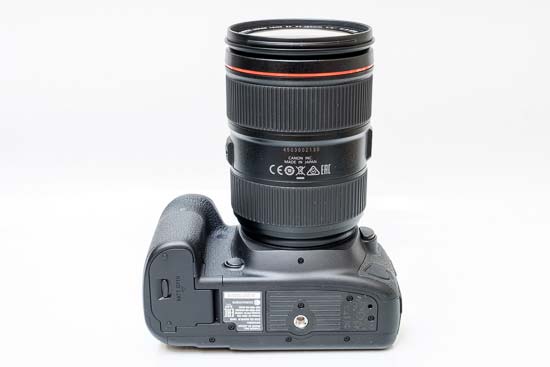 |
| Bottom of the Canon EOS 5D Mark Four |
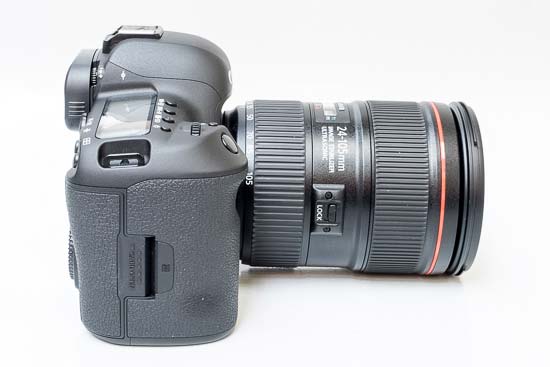 |
| Side of the Canon EOS 5D Mark IV |
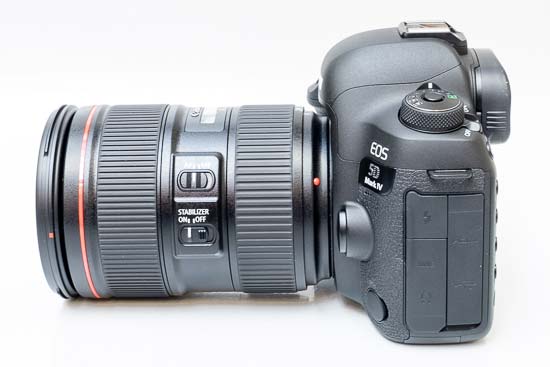 |
| Side of the Canon EOS 5D Marker IV |
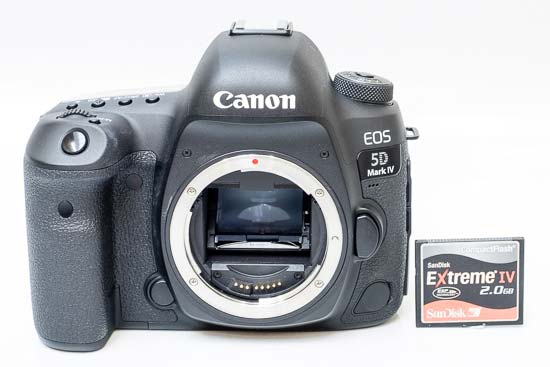 |
| Front of the Canon EOS 5D Mark IV |
 |
| Front of the Catechism EOS 5D Marking 4 |
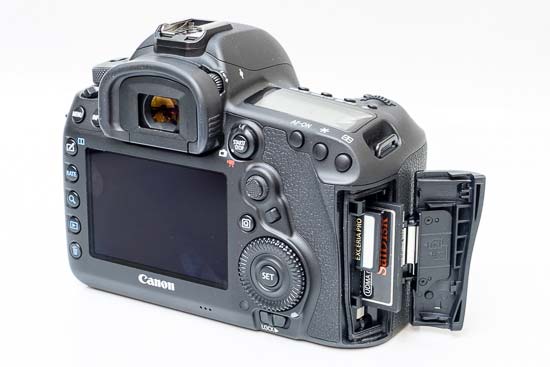 |
| Retentivity Card Slot |
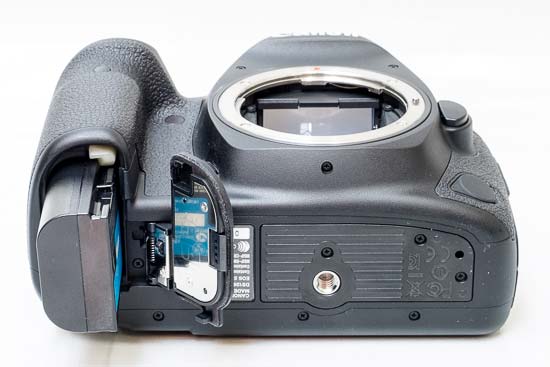 |
| Battery Compartment |
Conclusion
The Canon EOS 5D Mark Iv builds on the proven pattern of its popular four-twelvemonth-old predecessor, the 5D Mark III, upgrading just about every aspect of its performance, which all adds up to a much better, yet still familiar, all-circular camera for stills and video shooters alike. A sharp increase in the launch price in Europe and the UK does accept some of the sheen off the camera, though, as does the Sony A7R Two, which despite being a twelvemonth quondam still outperforms Catechism'southward latest offering in some ways, especially when information technology comes to shooting video.
While the new thirty megapixel sensor doesn't audio like a massive improvement on the 5D Mark 3's 22 megapixels, in conjunction with the Digic vi processor it results in higher resolution and even so very impressive low-light performance, with an almost noise-free range of ISO 50-6400 and perfectly usable 12800 and 25600 settings. The benefits of the headline-grabbing Dual Pixel RAW file format are a lot more than subtle, so much so that for some users it won't be worth the significant downsides of turning it on.
Withal and video image quality, burst shooting speed, autofocusing, connectivity and live view have all been profoundly improved, making the EOS 5D Marking IV a very well-rounded DSLR photographic camera that's a veritable pleasance to shoot with. While the industry has placed a lot of emphasis in recent years on smaller, lighter mirrorless cameras, there'south still a lot to be said for shooting with a "traditional" DSLR, and in that respect the 5D Mark Iv is certainly one of the best on the market. However, competition from mirrorless is fierce, especially from the disruptive juggernaut that is Sony, so if you accept don't have a stiff preference for the DSLR format, you should certainly bank check out some of the many non-mirrored competitors that the 5D Mark IV is up against.
This is especially true in the Uk and Europe, where attributable to diverse factors, the introductory toll of the 5D Mark Iv is significantly college than that of the 5D Mark III when it was launched in 2012 (U.s.a. residents tin can savor the same $3499 body-only price). Information technology would be remiss of you to dismiss the 5D Mark IV based on cost alone, though, as despite looking like its predecessor, it out-performs it in almost every way. The new EOS 5D Mark IV is one time again the Canon DSLR that nosotros like the most, although the competition has never been greater...
| Ratings (out of v) | |
|---|---|
| Design | four.5 |
| Features | 5 |
| Ease-of-utilise | 4.5 |
| Epitome quality | 5 |
| Value for money | 3.5 |
Principal Rivals
Listed beneath are some of the rivals of the Canon EOS 5D Marking IV.

The Fujifilm Ten-T2 is a new compact system camera that builds on the success of the popular two-twelvemonth-old X-T1, nearly notably by calculation 4K video recording, a more sophisticated auto-focusing system, and a wealth of other improvements. Read our in-depth Fujifilm X-T2 review to discover out if it's worth the upgrade...
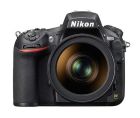
The Nikon D810 is a brand new 36 megapixel full-frame sensor DSLR camera with no optical depression pass filter. The D810 also offers 1080/60p Hard disk video, a 3.2-inch LCD screen, an optical viewfinder with 100% coverage and 5fps flare-up shooting. Read our in-depth Nikon D810 review to find out if it tin emulate the success of the previous D800/E cameras...
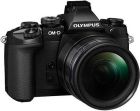
The Olympus O-Md E-M1 is a new professional compact system camera. Targeting its DSLR rivals, Olympus are promoting the Eastward-M1 as a smaller and more capable camera. Read our expert Olympus E-M1 review to observe out if it really tin beat the competition...
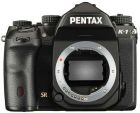
The new K-1 is the long-awaited full-frame DSLR camera from Pentax, based around a 36.four megapixel CMOS sensor. Is this the all-time ever Pentax DSLR? Read our in-depth Pentax Chiliad-one review to find out...
The Sony A7R 2 is a hotly-anticipated full-frame compact system camera that promises to outclass the DSLR contest. Is this the best full-frame camera on the market? Read our Sony A7R 2 review to observe out...

The Sony A7S II is a new compact system camera that can literally shoot in the dark. Building on terminal year's A7S model, the new mark Ii version offers more than video features, enhanced ergonomics, congenital-in image stabilisation and faster focusing. Read our in-depth Sony A7S Ii review now...
Review Roundup
Reviews of the Canon EOS 5D Marker Four from around the web.
The Canon EOS 5D Mark 4 boasts a huge array of high end features, including a 30 megapixel full frame CMOS imaging sensor and Canon's latest AF system, for a significantly lower cost than Canon's current one-Series model. This value and versatility, as with all EOS v-Series models before it, launched the Canon EOS 5D Marking IV to great fanfare and a strong need.
Read the total review »
The Canon EOS 5D series is arguably 1 of the most recognizable camera lines of the digital age and the Mark Iv is designed to appeal to the aforementioned wide range of enthusiasts and professionals. Nearly identical-looking to its predecessor, it receives substantial upgrades under the hood, including: a higher-resolution sensor with Dual Pixel autofocus, 4K video capture, an upgraded AF system, a touchscreen, improved weather condition-sealing, built-in Wi-Fi/NFC, an interval timer and GPS. All this adds upwardly to a photographic camera that fits into Canon's production line nicely as the all-around full-frame option.
Read the total review »
The Canon EOS 5D Marking 4 is the successor to the EOS 5D Mark Iii, and builds on the success of this enormously popular series of total-frame DSLRs. When the original EOS 5D was launched in October 2005, it became the beginning 'affordable' full-frame DSLR. Three and a one-half years afterwards, the Mark II almost doubled the resolution and became the first DSLR to really embrace the potential of video recording.
Read the full review »
The fourth version of the highly successful Canon EOS 5D, the Catechism EOS 5D Mark Four is now available, and the latest version introduces a number of new features, including a new 30 megapixel total-frame sensor made by Canon, 7fps continuous shooting, 4K video recording, plus built-in GPS and Wi-Fi.
Read the full review »
Specifications
Paradigm SENSOR
| Type | 36 x 24 mm CMOS |
|---|---|
| Effective Pixels | Approx. xxx.4 megapixels |
| Total Pixels | Approx. 31.seven megapixels |
| Aspect Ratio | three:2 |
| Low-Laissez passer Filter | Built-in/Fixed |
| Sensor Cleaning | EOS integrated cleaning system |
| Colour Filter Type | Chief Color |
IMAGE PROCESSOR
| Type | DIGIC 6+ |
|---|
LENS
| Lens Mountain | EF (excludes EF-S / EF-1000 lenses) |
|---|---|
| Focal Length | Equivalent to one.0x the focal length of the lens |
FOCUSING
| Type | TTL-secondary epitome-forming stage-difference detection organisation with defended AF sensor |
|---|---|
| AF System/ Points |
|
| AF working range | EV -3 - 18 (at 23°C & ISO100) |
| AF Modes |
|
| AF Point Selection |
|
| Selected AF betoken display | Transparent LCD in viewfinder and shown on Quick Control screen |
| AF Lock | Locked when shutter push is pressed half way or AF ON is pressed in One Shot AF mode. Using customised push button set to AF stop in AI servo |
| AF Assist Beam | Emitted past an optional dedicated Speedlite |
| Manual Focus | Selected on lens |
| AF Microadjustment |
|
EXPOSURE Control
| Metering modes |
|
|---|---|
| Metering Effulgence Range | EV 0 - 20 (at 23°C, ISO100, with evaluative metering) |
| AE Lock |
|
| Exposure Compensation | +/-5 EV in 1/iii or 1/ii end increments (tin can be combined with AEB). |
| AEB | +/-3 EV in 1/three or 1/two stop increments |
| Anti-flicker shooting | Aye. Flicker detected at a frequency of 100 Hz or 120 Hz. Maximum continuous shooting speed may decrease |
| ISO Sensitivity (1) |
|
SHUTTER
| Type | Electronically-controlled focal-plane shutter |
|---|---|
| Speed | 30-1/8000 sec (1/2 or 1/iii stop increments), Bulb (Total shutter speed range. Available range varies by shooting mode) |
| Shutter Release | Soft touch electromagnetic release |
WHITE Remainder
| Type | Auto white residue with the imaging sensor |
|---|---|
| Settings |
|
| Custom White Residual | Yes, one setting can be registered |
| WB Bracketing |
|
VIEWFINDER
| Type | Pentaprism |
|---|---|
| Coverage (Vertical/Horizontal) | Approx. 100% |
| Magnification | Approx. 0.71x(4) |
| Eyepoint | Approx. 21mm (from eyepiece lens center) |
| Dioptre Correction | -3 to +i m-1 (dioptre) |
| Focusing Screen | Stock-still, with information Transparent LCD overlay |
| Mirror | Quick-return half mirror |
| Viewfinder Information |
|
| Depth of field preview | Aye, with Depth of Field preview push button |
| Eyepiece shutter | On strap |
LCD MONITOR
| Type | eight.10cm (3.2") Clear View LCD Ii, approx. 1620K dots |
|---|---|
| Coverage | Approx. 100% |
| Viewing Angle (horizontally/vertically) | Approx 170° vertically and horizontally |
| Coating | Anti-reflection and Anti-smudge. Reinforced glass incorporated |
| Effulgence Aligning |
|
| Impact-screen operations | Capacitive method with menu functions, Quick Control settings, playback operations, and magnified display. AF point pick in Live View and Movies, touch shutter is possible in Live View notwithstanding photo shooting. |
| Display Options |
|
Wink
| Modes | E-TTL II Automobile Flash, Metered Manual |
|---|---|
| X-sync | 1/200sec |
| Wink Exposure Bounty | +/- 3EV in ane/3 increments with EX series Speedlites |
| Wink Exposure Bracketing | Yes, with compatible External Wink |
| Flash Exposure Lock | Yes |
| Second Curtain Synchronisation | Yep |
| HotShoe/ PC terminal | Yes/ Aye |
| External Wink Compatibility | E-TTL 2 with EX series Speedlites, wireless multi-flash support |
| External Wink Control | via camera carte screen |
SHOOTING
| Modes | Scene Intelligent Auto, Plan AE , Shutter priority AE, Discontinuity priority AE, Transmission (Stills and Motion picture), Bulb and Custom (x3) |
|---|---|
| Picture Styles | Auto, Standard, Portrait, Landscape, Fine Item, Neutral, Faithful, Monochrome, User Defined (x3) |
| Colour Space | sRGB and Adobe RGB |
| Image Processing |
|
| Bulldoze modes | Unmarried, Continuous High, Continuous Depression, Silent Single, Silent Continuous, Self timer (2s+remote, 10s+remote) |
| Continuous Shooting |
|
| Interval timer | Congenital-in, number of shots selectable from i-99 or unlimited (Selectable interval time - 1sec to 99hr 59mins 59sec). Bulb timer possible (Selectable time - 1sec to 99hr 59mins 59sec) |
LIVE VIEW MODE
| Type | Electronic viewfinder with paradigm sensor |
|---|---|
| Coverage | Approx. 100% (horizontally and vertically) |
| Frame Rate | 29.97 fps (may increase when AF is performed) |
| Focusing |
|
| Metering |
|
| Brandish Options |
|
FILE TYPE - STILLS
| Yet Paradigm Blazon |
|
|---|---|
| RAW+JPEG simultaneous recording | Aye, any combination of RAW + JPEG possible, separate formats to separate cards possible including Dual Pixel RAW +JPEG |
| Image Size |
|
| Folders | New folders tin be manually created and selected |
| File Numbering |
|
EOS MOVIE
| Movie Type |
|
|---|---|
| Moving-picture show Size |
|
| Color Sampling (Internal recording) |
|
| Movie Length | 4K and Full Hard disk - Max duration 29min 59sec. (excluding High Frame Rate movies). No 4GB file limit with exFAT CF bill of fare |
| Loftier Frame Rate Movie |
|
| 4K Frame Grab | 8.8 megapixel JPEG however image frame take hold of from 4K pic possible |
| Bitrate / Mbps |
|
| Microphone | Congenital-in monaural microphone (48Khz, 16 bit x ii ch) |
| HDMI Brandish | External monitor only, External Monitor only without information display or Simultaneous on camera and external monitor |
| HDMI Output | Full Hard disk recording only, uncompressed YCbCr 4:2:2, 8-bit, sound output via HDMI is also possible |
| Focusing |
|
| ISO |
|
Born GPS
| Geotag Information | Longitude, Latitude, Elevation, Coordinated Universal Time |
|---|---|
| Positioning Modes |
|
| Position Update Timing | Intervals of 1 sec., v sec., x sec., xv sec., xxx sec., 1 min., two min. or 5 min. |
| Position Accuracy | Within approx. 30 m/98.4 ft (Based on good GPS satellite reception conditions on a clear twenty-four hours with no surrounding obstructions) |
| Compatible Satellite Navigation Systems |
|
| Log Files Format | NMEA Format. One log file per 24-hour interval based |
| Log File Usage |
|
| Digital Compass | Not provided |
OTHER FEATURES
| Custom Functions | 17 Custom Functions with 46 settings |
|---|---|
| Metadata Tag |
|
| LCD Panel / Illumination | Yes / Yes |
| Water/ Grit resistance | Yes |
| Vocalisation Memo | No |
| Intelligent Orientation Sensor | Yeah |
| Playback zoom | 1.5x - 10x in 15 steps |
| Display Formats |
|
| Slide Show |
|
| Histogram |
|
| Highlight Alert | Yes |
| Image Erase | Unmarried image, Selected images, Folder, Carte |
| Image Erase Protection | Erase protection of Unmarried paradigm, Binder or Card |
| Self Timer | two or ten sec. |
| Menu Categories |
|
| Menu Languages |
|
| Firmware Update | Update possible by the user (Camera, Lens, WFT, External Speedlite) |
INTERFACE
| Reckoner | SuperSpeed USB 3.0 |
|---|---|
| WiFi |
|
| Other | HDMI mini out (Type C, HDMI-CEC compatible), External Microphone In / Line In (Stereo mini jack), Headphone socket (Stereo mini jack), N3-blazon terminal (remote control terminal) |
Directly Impress
| PictBridge | Yep (Via Wireless LAN only) |
|---|
STORAGE
| Type |
|
|---|
SUPPORTED OPERATING SYSTEM
| PC & Macintosh |
|
|---|
SOFTWARE
| Image Processing | Digital Photograph Professional 4.5 or later (RAW Image Processing) |
|---|---|
| Other | EOS Utility 3.v or subsequently (inc. Remote Capture ), Pic Mode Editor, Map Utility, EOS Lens Registration Tool, EOS Web Service Registration Tool, Catechism Camera connect app (iOS/ Android) |
Power SOURCE
| Batteries | Rechargeable Li-ion Bombardment LP-E6N (supplied) / LP-E6 |
|---|---|
| Battery life |
|
| Battery Indicator | 6 levels + percentage |
| Ability saving | Ability turns off after 1, 2, iv, 8, 15 or 30mins |
| Power Supply & Battery Chargers | Battery charger LC-E6E (supplied), Bombardment charger LC-E6, AC Adapter Air-conditioning-E6N and DC Coupler DR-E6, Air-conditioning Adapter Kit ACK-E6N/ACK-E6, Car Battery Charger CBC-E6 |
PHYSICAL SPECIFICATIONS
| Body Materials | Magnesium Alloy body and polycarbonate with glass fiber Prism cover |
|---|---|
| Operating Environment | 0 – 40 °C, 85% or less humidity |
| Dimensions (WxHxD) | 150.seven x 116.4 x 75.9mm |
| Weight (body only) | Approx. 890 g |
ACCESSORIES
| Viewfinder | Eyecup Eg, Eg-serial Dioptric Adjustment Lens with Rubber Frame Eg, Anti Fog Eyepiece Eg, Angle Finder C |
|---|---|
| Wireless File Transmitter | Wireless File Transmitter WFT-E7B |
| Lenses | All EF lenses (excluding EF-S / EF-One thousand lenses) |
| Flash | Canon Speedlites (90EX, 220EX, 270EX, 270EX Two, 320EX, 380EX, 420EX, 430EX, 430EX Ii, 430EX III 550EX, 580EX, 580EX Ii, 600EX, 600EX-RT, 600EX-II-RT, Macro-Ring-Lite MR-14EX, Macro Ring Calorie-free MR-14EX II, Macro Twin Lite MT-24EX, Speedlite Transmitter ST-E2, Speedlite Transmitter ST-E3-RT) |
| Remote Controller/ Switch | Remote control with N3 type contact, Wireless Controller LC-5 and Speedlite 600EX-Ii-RT |
| Other | BG-E20 battery grip, Hand Strap E2, Connect Station CS100 |
FOOTNOTES
| Disclaimer |
|
|---|---|
| AF System/ Points | (i) The number of AF points, cross-type AF points, and dual cross-blazon AF points vary depending on the lens used |
| ISO Sensitivity | (1) Recommended Exposure Index |
| Magnification | (ane) with 50mm lens at infinity, -1m-one dpt |
| Prototype Processing |
|
| Continuous Shooting |
|
| Motion-picture show Type | (1) Minimum bill of fare write speed required for 4K 30p recording: CF – 100MB/sec |
| WiFi | (one) Wi-Fi apply may be restricted in certain countries or regions |
| Bombardment life | (1) Viewfinder shooting. Based on the CIPA Standard and using the battery supplied with the camera, except where indicated |
Your Comments
- Introduction
- Ease of Use
- Image Quality
- Sample Images
- Product Images
- Determination
- Chief Rivals
- Review Roundup
- Specifications
blackwellresiduchathe.blogspot.com
Source: https://www.photographyblog.com/reviews/canon_eos_5d_mark_iv_review
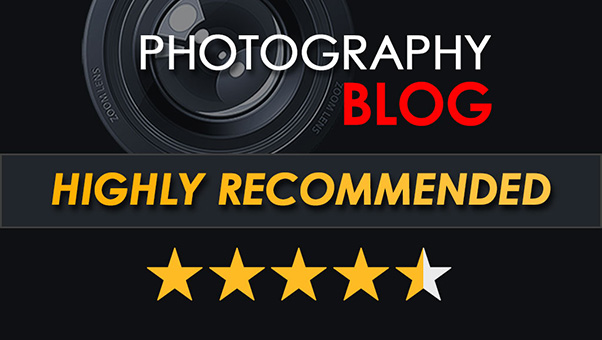
0 Response to "Canon Eos 5d Mark Iv Digital Slr Camera How to Upload Dslr Pictures"
Post a Comment